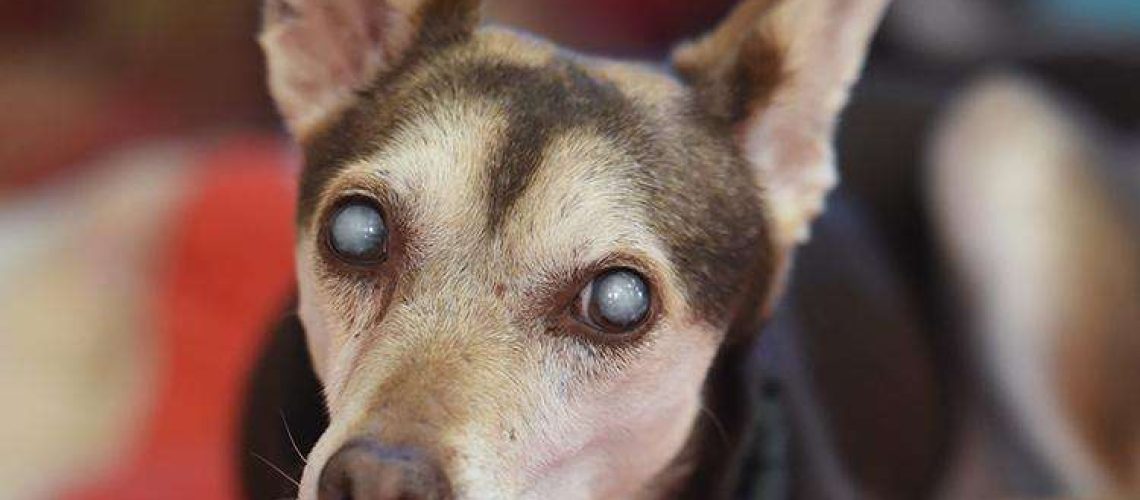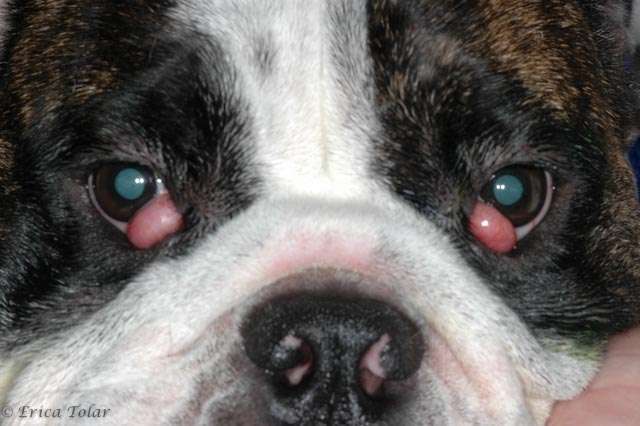Key Takeaways:
- Cataracts in dogs are a common eye condition that can cause vision impairment or blindness.
- Genetics, age, trauma, and certain medical conditions can contribute to the development of cataracts in dogs.
- Symptoms of cataracts in dogs include cloudy or opaque eyes, difficulty seeing in low light, and bumping into objects.
- Cataract surgery is an option for treating cataracts in dogs and can restore their vision in most cases.
- Regular veterinary check-ups and early detection are crucial for managing cataracts and preventing further complications.
Are you a dog lover? Do you want to ensure the health and well-being of your furry friend? Then delving into the subject of cataracts in dogs is essential for you! Cataracts, a common eye condition in dogs, can greatly impact their vision and overall quality of life.
By understanding this topic, you will not only be able to identify the signs and symptoms of cataracts but also take preventative measures to protect your canine companion. Get ready to uncover eye-opening facts and discover how you can make a difference in your dog's life!
Understanding Cataracts in Dogs: How They Affect Vision
What are cataracts?
Cataracts are a common eye problem that can affect dogs, just like they can affect humans. They occur when the lens of the eye becomes cloudy, making it difficult for light to pass through and reach the retina at the back of the eye. This cloudiness can cause blurry or hazy vision, making it harder for dogs to see clearly. Think of it like looking through a foggy window - things become less clear and more difficult to make out.
How do cataracts impact a dog's vision?
When cataracts develop in a dog's eyes, their vision can become significantly impaired. Initially, dogs may experience mild vision problems, such as difficulty seeing objects far away or trouble navigating in dimly lit areas. As the cataracts progress and become more severe, dogs may eventually lose their ability to see completely. This can greatly impact their quality of life and ability to perform everyday activities.
Causes and Prevention of Cataracts in Dogs
What causes cataracts in dogs?
Cataracts in dogs can have various causes. Some are genetic, meaning they are inherited from their parents. Other factors that can contribute to cataract development include old age, diabetes mellitus (a condition where blood sugar levels are too high), trauma or injury to the eye, exposure to certain toxins or medications, and inflammation within the eye.
Can cataracts be prevented?
While some forms of cataracts cannot be prevented due to genetic factors or aging, there are steps you can take to minimize the risk for your furry friend. Regular veterinary check-ups are crucial as they can help detect any early signs of cataract formation. Maintaining a healthy lifestyle for your dog, including a balanced diet and regular exercise, can also contribute to overall eye health. Additionally, protecting your dog's eyes from potential hazards or trauma can help reduce the risk of developing cataracts.
Recognizing Cataracts in Dogs: Symptoms to Look Out For
Cataracts are a common eye condition that can affect dogs of all breeds and ages. It is important for dog owners to be able to recognize the symptoms of cataracts so that they can seek appropriate veterinary care. Some common signs of cataracts in dogs include cloudiness or opacity in the eye, difficulty seeing or navigating familiar surroundings, increased clumsiness or bumping into objects, and changes in behavior such as increased irritability or anxiety. If you notice any of these symptoms in your dog, it is important to consult with a veterinarian who can perform a thorough examination and provide a proper diagnosis.
Cloudiness or Opacity in the Eye
One of the most noticeable signs of cataracts in dogs is the presence of cloudiness or opacity in the affected eye. This cloudiness may vary in severity and can range from a slight haziness to complete opaqueness. It is often more easily visible when light shines directly into the eye. If you notice any changes in your dog's eye appearance, it is essential to have them examined by a veterinarian.
Difficulty Seeing or Navigating Familiar Surroundings
Dogs with cataracts may also experience difficulty seeing or navigating their usual environment. They may bump into furniture, walls, or other objects more frequently than before. You might observe them hesitating before jumping onto furniture or struggling to find their favorite toys. These changes in behavior can indicate that your dog's vision has been affected by cataracts.
Increased Clumsiness and Changes in Behavior
Cataracts can cause dogs to become more clumsy due to their impaired vision. They may stumble while walking, misjudge distances when jumping, or have trouble catching treats thrown their way. Additionally, some dogs may exhibit changes in behavior such as increased irritability or anxiety. These behavioral changes can be a result of the frustration and discomfort caused by their vision loss.
Dog Breeds Prone to Cataracts: Who is at Risk?
While cataracts can occur in any dog, certain breeds are more prone to developing this eye condition. Genetics play a significant role in determining a dog's susceptibility to cataracts. Some dog breeds that are commonly at risk for cataracts include:
Poodle
Poodles, both standard and miniature, have a higher incidence of cataracts compared to other breeds. This genetic predisposition makes regular eye examinations crucial for poodle owners.
Siberian Husky
Siberian Huskies are also known to be prone to cataracts. Regular check-ups with a veterinarian can help detect and monitor any changes in their eye health.
Bichon Frise
Bichon Frises have a genetic predisposition to develop hereditary cataracts. Early detection through routine eye exams is essential for managing this condition effectively.
It is important to note that while these breeds may be more susceptible, cataracts can still occur in any dog regardless of breed or mix. Regular veterinary check-ups and proactive monitoring of your dog's eye health are crucial for early detection and appropriate treatment if necessary.
Treatment Options for Cataracts in Dogs: Can They be Treated or Cured?
Medical Management
Cataracts in dogs can be managed medically, especially during the early stages. Your veterinarian may prescribe eye drops or ointments to help reduce inflammation and discomfort. These medications can also slow down the progression of cataracts and alleviate some of the symptoms associated with the condition. However, it's important to note that medical management cannot cure cataracts completely.
Surgical Intervention
Surgery is currently the only effective treatment for cataracts in dogs. The procedure involves removing the cloudy lens and replacing it with an artificial one. This surgery, called phacoemulsification, has a high success rate and can significantly improve your dog's vision. It is typically recommended when cataracts cause severe vision impairment or affect both eyes. However, like any surgical procedure, there are potential risks involved which will be discussed further in the next section.
Alternative Therapies
While there are no alternative therapies that can cure cataracts in dogs, some pet owners may explore complementary treatments such as acupuncture or herbal remedies to manage their dog's symptoms or support their overall eye health. It's important to consult with a veterinarian before trying any alternative therapies to ensure they are safe and appropriate for your dog.
List of Treatment Options:
- Medical management with eye drops or ointments
- Surgical intervention (phacoemulsification)
- Alternative therapies (acupuncture, herbal remedies)
Potential Risks of Cataract Surgery for Dogs: What You Should Know
Anesthesia Risks
During cataract surgery, your dog will need to be placed under anesthesia. While modern anesthesia techniques are generally safe, there is always a small risk involved. Your veterinarian will carefully assess your dog's overall health and conduct pre-anesthetic blood work to minimize these risks. It's important to discuss any concerns you may have with your veterinarian before proceeding with surgery.
Postoperative Complications
After cataract surgery, there is a possibility of complications such as infection, inflammation, or swelling in the eye. Your veterinarian will provide detailed postoperative care instructions to minimize these risks. It's crucial to follow these instructions closely and monitor your dog for any signs of discomfort or abnormal behavior during the recovery period.
Tips for Minimizing Risks:
- Ensure your dog receives a thorough pre-anesthetic evaluation
- Follow postoperative care instructions provided by your veterinarian
- Monitor your dog closely for any signs of complications
Helping Your Dog Adapt to Vision Loss from Cataracts
Creating a Familiar Environment
When a dog loses vision due to cataracts, it can be disorienting and stressful. To help them adapt, create a familiar environment by keeping furniture and objects in their usual places. Avoid rearranging furniture or introducing new obstacles that could cause accidents or confusion.
Using Auditory Cues
Since dogs heavily rely on their sense of hearing, using auditory cues can assist them in navigating their surroundings. You can use verbal cues or specific sounds to guide them through daily routines or alert them to potential hazards.
Tips for Helping Your Dog Adapt:
- Keep furniture and objects in familiar places
- Avoid rearranging furniture or introducing new obstacles
- Use verbal cues or specific sounds to assist navigation
In conclusion, cataracts in dogs are a common eye condition that can cause vision problems. It is important for dog owners to be aware of the signs and seek veterinary care to prevent further complications and improve their pet's quality of life.
What do you do for a dog with cataracts?
Veterinary ophthalmologists are capable of performing surgery to remove cataracts and improve the deteriorating vision caused by cataracts in animals. The majority of pets experience minimal issues and are able to resume their normal activities, such as running and playing, within a few days of the procedure.
Can dogs live comfortably with cataracts?
Numerous dogs are able to live without discomfort for many years despite having cataracts. The cataracts themselves are not painful, but it is the secondary conditions like glaucoma that can cause discomfort.
How long can a dog have cataracts before they go blind?
Diabetic cataracts, which may be caused by irregular blood sugar levels, are the primary cause of blindness in humans and dogs. Dogs with diabetes have a 75% likelihood of developing cataracts, and if left untreated, 75% of those dogs will experience vision loss within 6-12 months.
What happens to untreated cataracts in dogs?
If left untreated, cataracts will become more severe and cover a larger portion of the lens over time. This progression will gradually worsen your dog's vision. Eventually, when no light can pass through the lens to the back of the eye, your dog will lose vision and become blind in either one or both eyes.
How can I get rid of my dogs cataracts without surgery?
At present, there is no scientifically validated technique to eliminate cataracts without undergoing surgery. However, there are ways to hinder the growth of cataracts. Adopting a nutritious diet, limiting exposure to UV light, and effectively managing underlying health conditions such as diabetes can aid in slowing down the advancement of cataracts.
How much does it cost to have a cataract removed from a dog's eye?
Cataracts in dogs are a condition where the eyes become cloudy, leading to blurry vision and potential blindness. To address this, cataract surgery can be performed to restore the dog's vision. The cost of this surgery typically ranges from $2,700 to $4,000 for dogs, although various factors, such as the severity of the condition, can affect the overall cost.

















